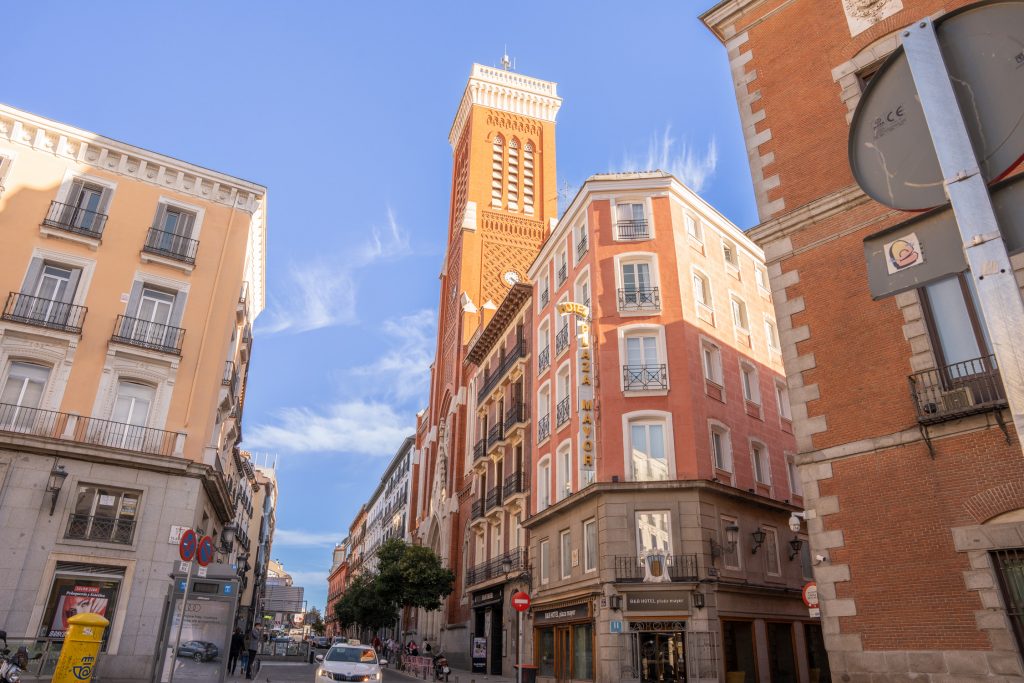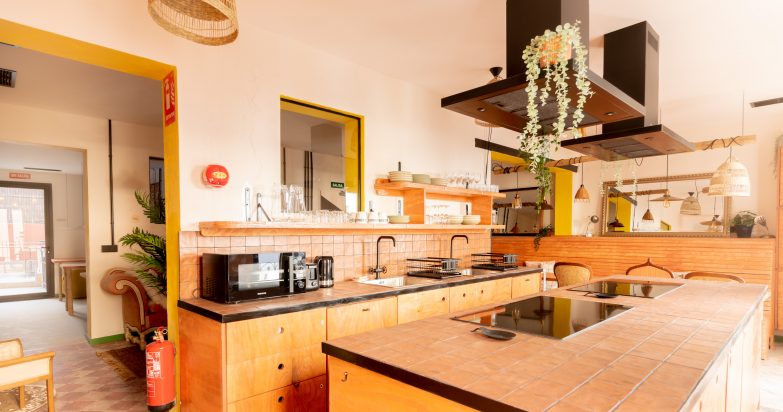As you walk down the buzzing streets of Madrid, you’ll quickly come to realize why the Spanish capital has a hold over so many many people. Each neighborhood has its own character and feel while retaining the vibrance and charm that this city is known for. If you’re planning on moving to Madrid to take advantage of its sunny days, remote worker-friendly culture, or simply to enjoy living the Spanish lifestyle, you have several options. Maybe you’ll want to try coliving in Madrid or live alone, but there’s no need to worry about finding the best housing situation to meet your needs.
When considering where to live, you need to first decide how you’re going to live. It boils down to three main choices: living solo, sharing an apartment with roommates, or the newest option on the block, coliving. Each one of these has its own perks and downsides, which we are going to break down here.
Living solo in Madrid
Many independent people choose to live solo for a number of reasons, whether it be more freedom, extra privacy, or not having to argue about whose turn it is to buy the toilet paper. If you’re considering living alone in Madrid, there are some key things to keep in mind that can help you make your decision.
Living solo: the pros
One of the biggest reasons that people choose to go it alone is that there’s just something so sweet about having your own space at the end of the day. Living alone gives you the freedom to decorate your place how you want, play music whenever you feel like it, and have free reign to live as you please (within the rules of your rental contract, of course). People who crave privacy in their personal life like the idea that when they come home to their apartment at the end of the day, they can relax exactly how they want to.

Another plus of living alone is that when you come home at night, things are exactly how they were when you left in the morning. Many apartments in Spain require butano, or gas tanks that you need to purchase every month or so in order to have hot water. Living alone ensures that you’ll never run into the problem of a roommate forgetting when it’s their turn to order the butano or worse yet, it runs out and they don’t say anything until you’re already standing in the shower, freezing. This is the same with all of the other shared items in an apartment like cookware, laundry detergent, or appliances. Things are always going to be exactly how you leave them each day.
Lastly, Madrid is a very safe city to live alone in. If you’re worried about safety, Spain in general has a very low crime rate compared to other big cities. While it’s always important to keep your wits about you when walking alone at night, the most common crime in Madrid is pickpocketing. Living alone is very safe, especially as many apartment doors have multiple locks and bars on the windows if you live on the ground floor.
The cons
Even though living alone can have many upsides, there are a few downsides to consider, as well. The first thing to think about is your budget since Madrid is the most expensive city in Spain, closely followed by Barcelona. The average monthly rent in the Spanish capital in 2023 for a one-bedroom apartment without utilities is about 1,015€, plus utilities. While this may sound cheap compared to other large cities, the average monthly salary in Madrid hovers around 1,600€. This doesn’t leave you a lot of wiggle room after paying rent, utilities, food, and any other monthly expenses.
While freedom and privacy may sound exciting in the beginning, you may start to get a little lonely after spending so much time by yourself. Even if you have a healthy social life, you might find it boring to be alone at home week after week.
Sharing a home: living with roommates
One of the most common ways newbies in Madrid settle in is by sharing an apartment with roommates. This is a great option for those looking to keep their monthly expenses low or who want to build up their social life right away.

The pros
Saving money on rent and bills is the biggest plus to sharing an apartment in Madrid. Renting a room drops your average rent from more than 1,000€ a month to between 400 and 500€ a month. Some landlords or flatmates may include certain utilities in this price as well, which is one less thing to worry about. On average, Madrileños spend about 150€ a month on utilities per household, so this can be reduced drastically if you have a roommate or two to split costs with.
Another perk is that you’ll get to know your roommates really well, which can help you build up a social life in Madrid. Spaniards are notoriously open and friendly, but having a few built-in friends can help when you’re new to the city and looking to build up a solid social group. Having a few friends to stroll Parque Retiro with or check out the art at the Prado is a fun way to see the city and explore your new home.
The cons
Anyone who has had a roommate before knows that while you can be very good friends with them, fights or disagreements are bound to happen from time to time. This is especially true when you have to share and maintain common spaces and items. You’re going to have less privacy and space, so it’s natural that little things, like a roommate who is messier than you, may start to wear on you over time. Setting out house rules when it comes to cleaning or common areas can help nip these problems in the bud.
You may also find that you and your roommates have very different schedules. It’s important to note that Spain, and Madrid in particular, is famous for its distinct timetable. Shops and businesses open later than many other places in Europe to conform with having the main meal of the day, lunch, around 2 PM. Dinner isn’t on the table until 9 PM or later. If you’re living with Spaniards or other expats that have assimilated to the local schedule, it’s not realistic to expect your house to be quiet by 10 PM.
Coliving in Madrid: a new way to live
One way of living that you might not have thought about is coliving. This is an excellent choice for remote or digital workers who are looking to meet like-minded individuals in the Spanish capital.
The pros
Coliving is an experience unlike any other way of renting since you are sharing a large space with common areas and private bedrooms with people who are probably very similar to you. Those that opt to try coliving tend to be young professionals who are social and want to network and meet others with common interests. Coliving spaces can have just a few rooms, which creates a more intimate bond between renters, or dozens of rooms so that you’re never short on friends to meet.
This arrangement is particularly enticing because most, if not all, of your expenses are included in one lump sum: rent, utilities, cleaning service, and internet, for example. A community manager is on-site to assist with any issues that may arise and to make sure that all of the renters are enjoying their experience. You’ll find that there are many organized social activities to encourage and embrace living a communal lifestyle. Coliving arrangements are equipped for digital or remote employees to work from home with shared workspaces and supplies included.

Rental agreements tend to be more flexible at a coliving too, which you might not find if you rent from a Spanish real estate agency. Most agencies will ask you to pay an agency fee and a few months’ rent while signing a year-long contract to enter an apartment in Madrid.
The cons
One thing to keep in mind is that this way of renting could potentially be more expensive than sharing a regular flat with a few roommates. As mentioned though, many of your daily expenses are included in this price but you’ll still need to budget for things like food, transportation, and entertainment outside of the coliving. Luckily, these expenses aren’t too high in Madrid. On average, you can count on spending 40€ a week on groceries and 47€ a month on transportation if you use the bus or metro frequently.
It’s also important to remember that this is a communal lifestyle, so you’re going to have several roommates. It may take some time to adapt to being surrounded by so many people and open up to strangers. Many co-living arrangements offer private rooms, but some are dorm-style. It’s important to do your research when you look into potential coliving spaces as a living option.
Final thoughts
While all three ways of renting and living in Madrid can have their advantages, a coliving space is a unique way to find your place in the Spanish capital. Living and working in the same building and not worrying about daily home upkeep saves you more time to explore the city with your new roommates who you already know have the same interests as you. It’s a cool way to discover the vibrance and creativity of Madrid while having an experience that you’ll never forget.
Want to join the Cohabs community in Madrid? Check out our available rooms!







